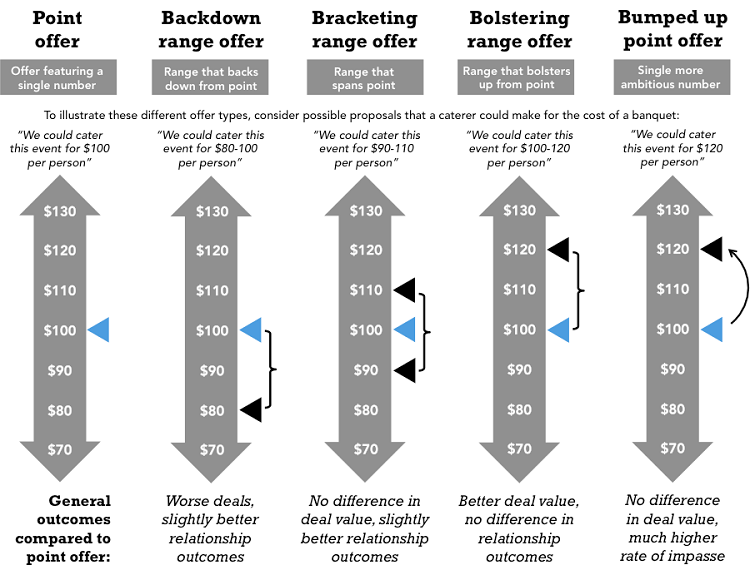In order to award yourself with an edge in any situation that calls for salary/price negotiation, it is ideal that you offer a range to increase your chances of getting an offer close to your goal.
Such range offers can lead to a better outcome for you, as compared to the alternative of proposing a single figure.
When negotiating your starting salary or a pay increase, for example, if you want a salary of $100, you may consider proposing a range $100 to $120.
By doing so, you increase the chances that at a minimum, you will get the salary you were looking for. If you’re lucky, you may receive a bonus of $10 to $20.
To negotiate salary in this manner, there are a few different approaches that you can take. The various styles of range offers have different success rates, according to a study led by professors Daniel Ames and Malia Mason at Columbia Business School.
Bolstering range
This consists of starting your proposition at your desired target amount and stretching it to a reasonable maximum.
So if you are looking to earn $60,000, you want to set your range from $60,000 to $65,000.
When negotiating salary, the bolstering range offer method seems to be the best strategy to use. It leads to the best amount for you and does not impact your relationship with the counter-party.
Bracketing range
Bracketing offers are when you are aiming for a starting salary of $60,000, and you set your range between $58,000 and $62,000 to better your chances of securing the median, which would be your desired amount of $60,000.
In the Columbia study, this approach didn’t lead to outcomes which were better or worse than single number offers. However, they could have the benefit of improving relationships.
Backdown range
This offer may be the least favorite method since you have a greater chance of ending up with less value than your starting point. If your starting point is a salary of $60,000, the backdown range offer suggests that you provide a range of $58,000 to $60,000.
This method is preferred the least, since it causes you to lose value compared to other approaches and only improves relationships slightly, when compared to single point offers.

You may think that range offer strategies are bound to fail because the other party might think you are uninformed and will make the lower end of your bracket their focal point. However, professors Ames and Mason demonstrated that they are more successful.
The reasons for this, are that providing a range makes you appear nicer and more flexible. Also, it puts an unconscious pressure on the other person, to return the niceness/flexibility.
One important point to keep in mind, is to provide numbers which are reasonable and not too high. Also, the range you provide should not be too wide. The most effective range offers and within 20% of each other.
When negotiating salary, Ames and Mason also suggest providing more precise numbers, instead of rounding-off. For example, $59,500 instead of $60,000. This has the effect of demonstrating that you have done your homework and are more informed.
